As skin ages, there is a decline in physiologic function. These changes are induced by both intrinsic (chronologic) and extrinsic (predominately UV-induced) factors. Botanicals offer potential benefits to combat some of the signs of aging. Here, we review select botanicals and the scientific evidence behind their anti-aging claims. Botanicals may offer anti-inflammatory, antioxidant, moisturizing, UV-protective, and other effects. A multitude of botanicals are listed as ingredients in popular cosmetics and cosmeceuticals, but only a select few are discussed here. These were chosen based on the availability of scientific data, the personal interest of the authors, and the perceived “popularity” of current cosmetic and cosmeceutical products. The botanicals reviewed here include argan oil, coconut oil, crocin, feverfew, green tea, marigold, pomegranate, and soy.
Keywords: botanical; anti-aging; argan oil; coconut oil; crocin; feverfew; green tea; marigold; pomegranate; soy
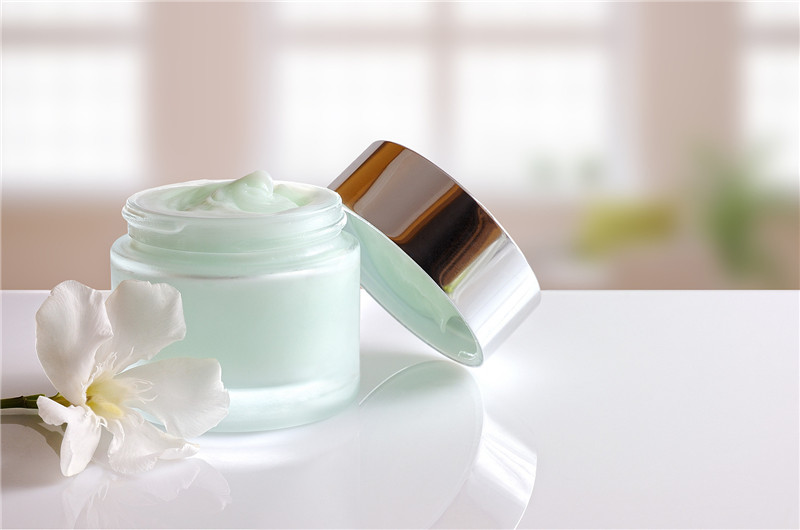
3.1. Argan Oil
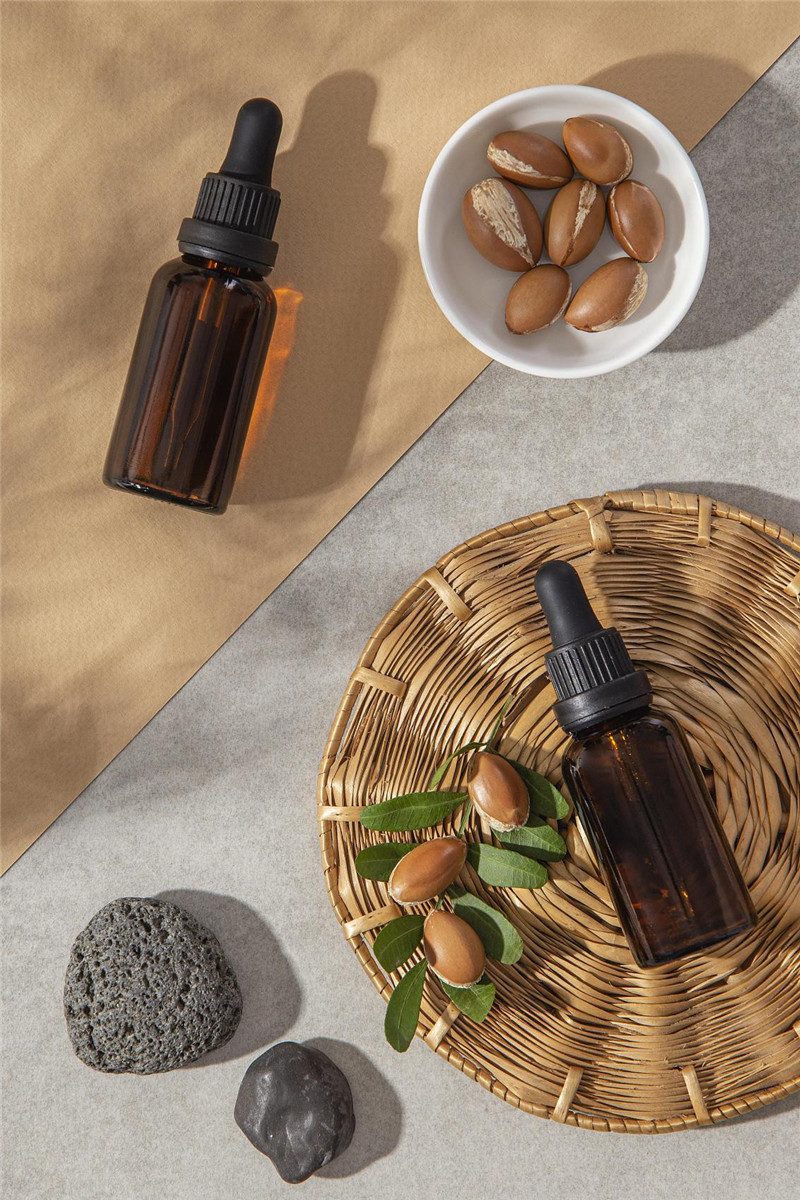
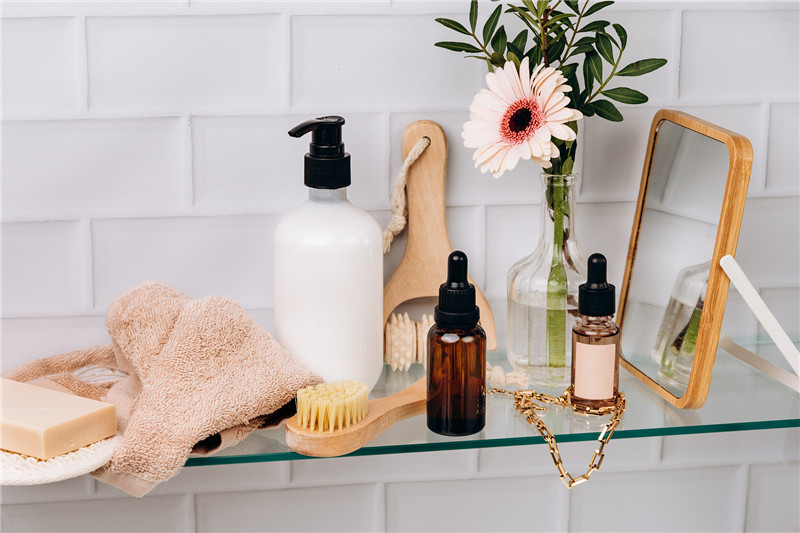
3.1.1. History, Usage, and Claims
Argan oil is endemic to Morocco and is produced from the seeds of Argania sponosa L. It has numerous traditional uses such as in cooking, treating skin infections, and skin and hair care.
3.1.2. Composition and Mechanism of Action
Argan oil is composed of 80% monounsaturated fat and 20% saturated fatty acids and contains polyphenols, tocopherols, sterols, squalene, and triterpene alcohol.
3.1.3. Scientific Evidence
Argan oil has traditionally been used in Morocco to decrease facial pigmentation, but the scientific basis for this claim was not previously understood. In a mouse study, argan oil inhibited tyrosinase and dopachrome tautomerase expression in B16 murine melanoma cells, resulting in a dose-dependent decrease in melanin content. This suggests that argan oil may be a potent inhibitor of melanin biosynthesis, but randomized control trials (RTC) in human subjects are needed to verify this hypothesis.
A small RTC of 60 post-menopausal women suggested that daily consumption and/or topical application of argan oil decreased transepidermal water loss (TEWL), improved elasticity of the skin, based on an increase in R2 (gross elasticity of the skin), R5 (net elasticity of the skin), and R7 (biological elasticity) parameters and a decrease in resonance running time (RRT) (a measurement inversely related to skin elasticity). The groups were randomized to consume either olive oil or argan oil. Both groups applied argan oil to the left volar wrist only. Measurements were taken from the right and left volar wrists. Improvements in elasticity were seen in both groups on the wrist where the argan oil was topically applied, but on the wrist where the argan oil was not applied only the group consuming argan oil had significant increases in elasticity [31]. This was attributed to the increased antioxidant content in argan oil compared to olive oil. It is hypothesized that this could be due to its Vitamin E and ferulic acid content, which are known antioxidants.
3.2. Coconut Oil
3.2.1. History, Usage, and Claims
Coconut oil is derived from the dried fruit of Cocos nucifera and has many uses, both historical and modern. It has been employed as a fragrance, skin, and hair conditioning agent, and in numerous cosmetic products. While coconut oil has numerous derivatives, including coconut acid, hydrogenated coconut acid, and hydrogenated coconut oil, we will discuss research claims associated predominately with virgin coconut oil (VCO), which is prepared without heat.
Coconut oil has been used for moisturization of infant skin and may be beneficial in the treatment of atopic dermatitis for both its moisturizing properties and its potential effects on Staphylococcus aureus and other skin microbes in atopic patients. Coconut oil has been shown to decrease S. aureus colonization on the skin of adults with atopic dermatitis in a double-blind RTC.
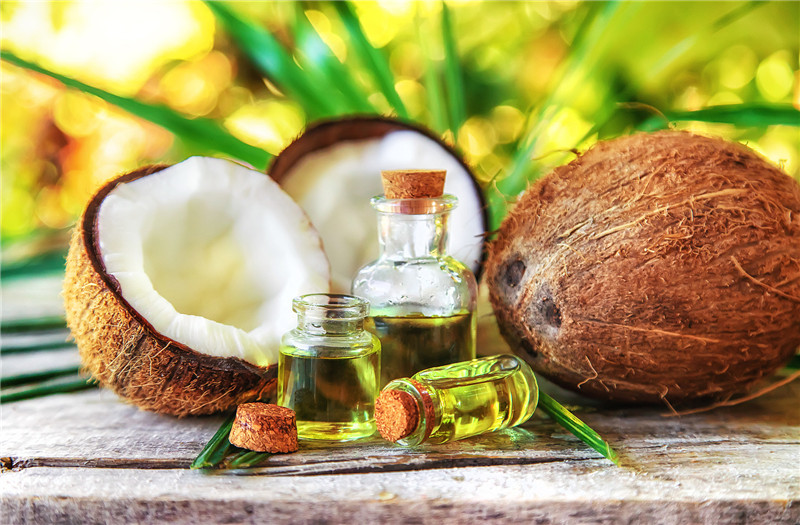
3.2.2. Composition and Mechanism of Action
Coconut oil is composed of 90–95% saturated triglycerides (lauric acid, myristic acid, caprylic acid, capric acid, and palmitic acid). This is in contrast to most vegetable/fruit oils, which are predominately composed of unsaturated fat. Topically applied saturated triglycerides function to moisturize the skin as an emollient by flattening dry curled edges of corneocytes and filling the gaps between them.
3.2.3. Scientific Evidence
Coconut oil can moisturize dry aging skin. Sixty-two percent of the fatty acids in VCO are of similar length and 92% are saturated, which allows for tighter packing that results in a greater occlusive effect than olive oil. The triglycerides in coconut oil are broken down by lipases in normal skin flora to glycerin and fatty acids. Glycerin is a potent humectant, which attracts water to the corneal layer of the epidermis from the outside environment and the deeper skin layers. The fatty acids in VCO have a low linoleic acid content, which is relevant since linoleic acid can be irritating to the skin. Coconut oil is superior to mineral oil in decreasing TEWL in patients with atopic dermatitis and is as effective and safe as mineral oil in treating xerosis.
Lauric acid, a precursor to monolaurin and an important component of VCO, may have anti-inflammatory properties, be able to modulate immune cell proliferation and be responsible for some of the antimicrobial effects of VCO. VCO contains high levels of ferulic acid and p-coumaric acid (both phenolic acids), and high levels of these phenolic acids are associated with an increased antioxidant capacity. Phenolic acids are effective against UV-induced damage. However, despite claims that coconut oil can function as a sunscreen, in vitro studies suggest that it offers little-to-no UV-blocking potential.
In addition to its moisturizing and antioxidant effects, animal models suggest that VCO may decrease wound healing time. There was an increased level of pepsin-soluble collagen (higher collagen cross-linking) in VCO-treated wounds compared to controls. Histopathology showed increased fibroblast proliferation and neovascularization in these wounds. More studies are necessary to see whether topical application of VCO can increase collagen levels in aging human skin.
3.3. Crocin

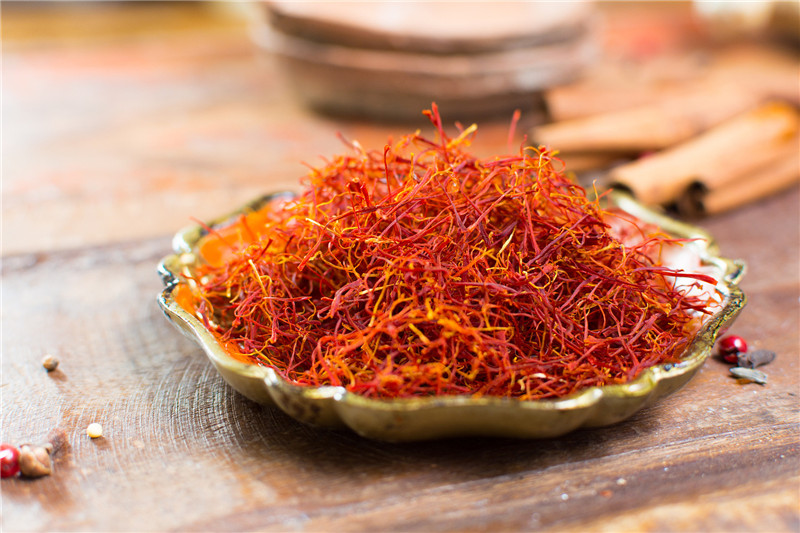
3.3.1. History, Usage, Claims
Crocin is a biologically active component of saffron, derived from the dried stigma of Crocus sativus L. Saffron is cultivated in many countries including Iran, India, and Greece, and has been used in traditional medicine to alleviate a variety of ailments including depression, inflammation, liver disease, and many others.
3.3.2. Composition and Mechanism of Action
Crocin is responsible for the color of saffron. Crocin is also found in the fruit of Gardenia jasminoides Ellis. It is classified as a carotenoid glycoside.
3.3.3. Scientific Evidence
Crocin has antioxidant effects, protects squalene against UV-induced peroxidation, and prevents the release of inflammatory mediators. The antioxidant effect has been demonstrated in in vitro assays that showed superior antioxidant activity compared to Vitamin C. Additionally, crocin inhibits UVA-induced cell membrane peroxidation and inhibits the expression of numerous pro-inflammatory mediators including IL-8, PGE-2, IL-6, TNF-α, IL-1α, and LTB4. It also decreases the expression of multiple NF-κB dependent genes. In a study using cultured human fibroblasts, crocin reduced UV-induced ROS, promoted the expression of extracellular matrix protein Col-1, and decreased the number of cells with senescent phenotypes after UV radiation. It decreases ROS production and limits apoptosis. Crocin was shown to suppress ERK/MAPK/NF-κB/STAT signaling pathways in HaCaT cells in vitro. Although crocin has the potential as an anti-aging cosmeceutical, the compound is labile. The use of nanostructured lipid dispersions for topical administration has been investigated with promising results. To determine the effects of crocin in vivo, additional animal models and randomized clinical trials are needed.
3.4. Feverfew
3.4.1. History, Usage, Claims
Feverfew, Tanacetum parthenium, is a perennial herb that has been used for multiple purposes in folk medicine.
3.4.2. Composition and Mechanism of Action
Feverfew contains parthenolide, a sesquiterpene lactone, which may be responsible for some of its anti-inflammatory effects, via the inhibition of NF-κB. This inhibition of NF-κB appears to be independent of parthenolide’s antioxidant effects. Parthenolide has also demonstrated anticancer effects against UVB-induced skin cancer and against melanoma cells in vitro. Unfortunately, parthenolide can also cause allergic reactions, oral blisters, and allergic contact dermatitis. Due to these concerns, it is now generally removed before feverfew is added to cosmetic products.
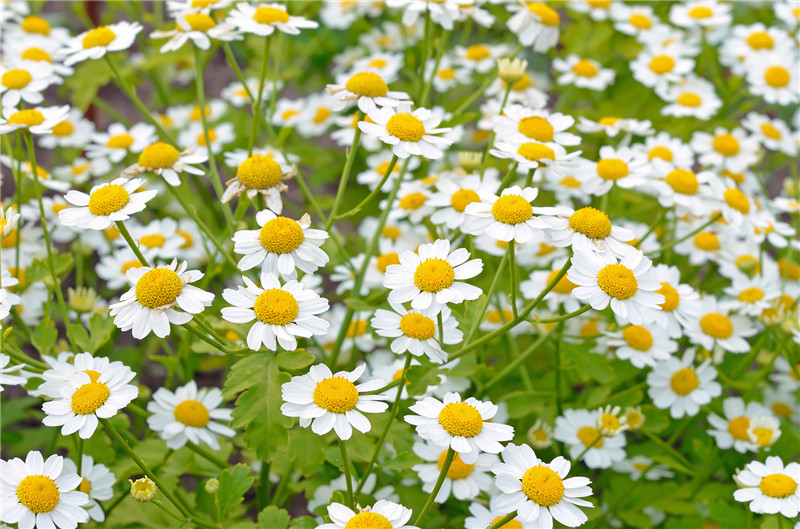
3.4.3. Scientific Evidence
Due to the potential complications with the topical use of parthenolide, some current cosmetic products containing feverfew use parthenolide-depleted feverfew (PD-feverfew), which claims to be free of sensitization potential. PD-feverfew can enhance endogenous DNA-repair activity in the skin, potentially decreasing UV-induced DNA damage. In an in vitro study, PD-feverfew attenuated UV-induced hydrogen peroxide formation and decreased pro-inflammatory cytokine release. It demonstrated stronger antioxidant effects than the comparator, Vitamin C, and decreased UV-induced erythema in a 12-subject RTC.
3.5. Green Tea
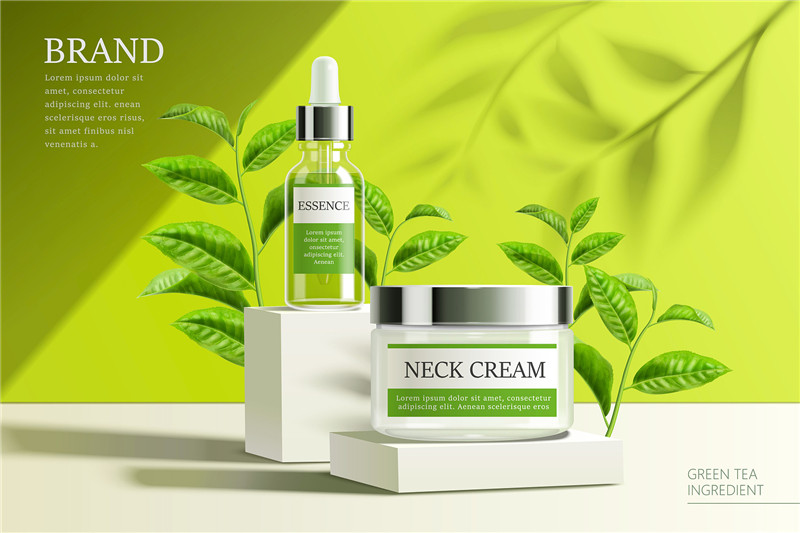
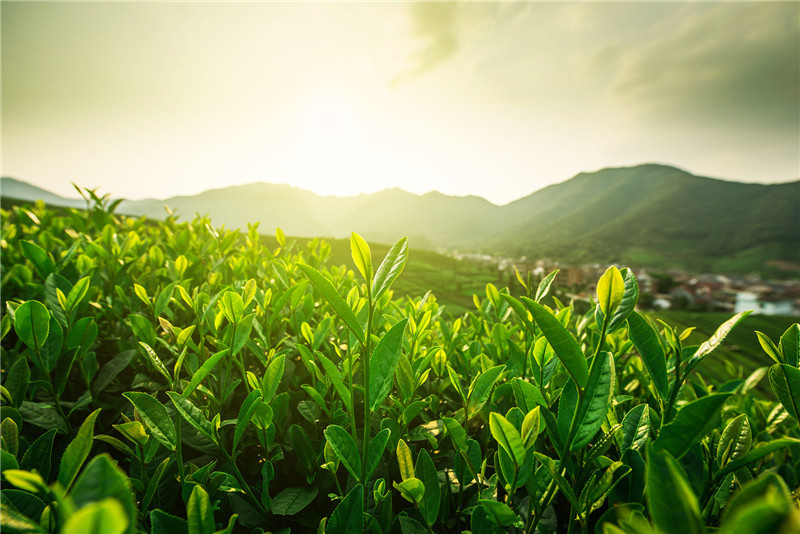
3.5.1. History, Usage, Claims
Green tea has been consumed for its health benefits in China for centuries. Due to its potent antioxidant effects, there is interest in the development of a stable, bioavailable topical formulation.
3.5.2. Composition and Mechanism of Action
Green tea, from Camellia sinensis, contains multiple bioactive compounds with possible anti-aging effects, including caffeine, vitamins, and polyphenols. The major polyphenols in green tea are catechins, specifically gallocatechin, epigallocatechin (ECG), and epigallocatechin-3-gallate (EGCG). Epigallocatechin-3-gallate has antioxidant, photoprotective, immunomodulatory, anti-angiogenic, and anti-inflammatory properties. Green tea also contains high amounts of flavonol glycoside kaempferol, which is well-absorbed in the skin after topical application.
3.5.3. Scientific Evidence
Green tea extract reduces intracellular ROS production in vitro and has decreased ROS-induced necrosis. Epigallocatechin-3-gallate (a green tea polyphenol) inhibits the UV-induced release of hydrogen peroxide, suppresses phosphorylation of MAPK, and decreases inflammation through the activation of NF-κB. Using ex vivo skin from a healthy 31-year-old woman, skin pretreated with white or green tea extract demonstrated retention of Langerhans cells (antigen-presenting cells responsible for the induction of immunity in the skin) after UV light exposure.
In a mouse model, topical application of green tea extract before UV exposure led to decreased erythema, decreased skin infiltration of leukocytes, and decreased myeloperoxidase activity. It can also inhibit 5-α-reductase.
Several studies involving human subjects have evaluated the potential benefits of topical application of green tea. Topical application of a green tea emulsion inhibited 5-α-reductase and led to a decrease in microcomedone size in microcomedonal acne. In a small six-week human split-face study, a cream containing EGCG decreased hypoxia-inducible factor 1 α (HIF-1α) and vascular endothelial growth factor (VEGF) expression, exhibiting the potential to prevent telangiectasias. In a double-blind study, either green tea, white tea, or vehicle only was applied to the buttocks of 10 healthy volunteers. The skin was then irradiated with a 2× minimal erythema dose (MED) of solar-simulated UVR. Skin biopsies from these sites demonstrated that the application of green or white tea extract could significantly reduce the depletion of Langerhans cells, based on CD1a positivity. There was also a partial prevention of UV-induced oxidative DNA damage, as evidenced by decreased levels of 8-OHdG. In a different study, 90 adult volunteers were randomized into three groups: No treatment, topical green tea, or topical white tea. Each group was further subdivided into different levels of UV radiation. The in vivo sun protection factor was found to be approximately SPF 1.
3.6. Marigold
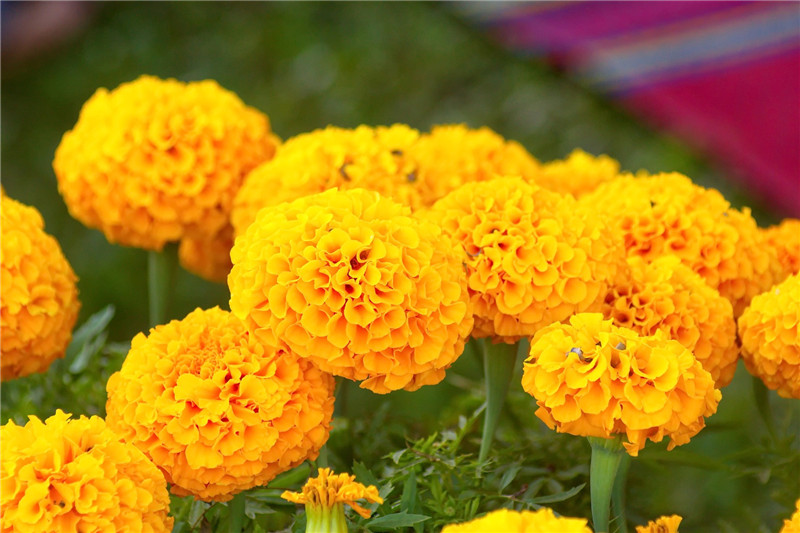
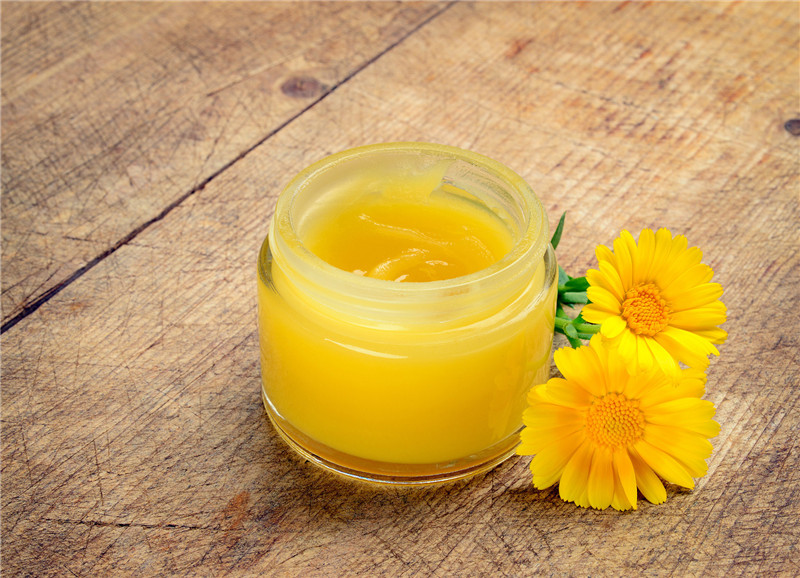
3.6.1. History, Usage, Claims
Marigold, Calendula officinalis, is an aromatic flowering plant with potential therapeutic possibilities. It has been used in folk medicine in both Europe and the United States as a topical medicament for burns, bruises, cuts, and rashes. Marigold has also shown anticancer effects in murine models of non-melanoma skin cancer.
3.6.2. Composition and Mechanism of Action
The main chemical components of marigolds are steroids, terpenoids, free and esterified triterpene alcohols, phenolic acids, flavonoids, and other compounds. Although one study demonstrated that topical application of marigold extract may decrease the severity and pain of radiation dermatitis in patients receiving radiation for breast cancer, other clinical trials have demonstrated no superiority when compared to the application of aqueous cream alone.
3.6.3. Scientific Evidence
Marigold has a demonstrated antioxidant potential and cytotoxic effects on human cancer cells in an in vitro human skin cell model. In a separate in vitro study, a cream containing calendula oil was evaluated via UV spectrophotometric and found to have an absorbance spectrum in the range of 290-320 nm; this was taken to mean that the application of this cream offered good sun protection. It is important to note, however, that this was not an in vivo test that calculated the minimum erythema dose in human volunteers and it remains unclear how this would translate in clinical trials.
In an in vivo murine model, marigold extract demonstrated a strong antioxidant effect after UV exposure. In a different study, involving albino rats, the topical application of calendula essential oil decreased malondialdehyde (a marker of oxidative stress) while increasing the levels of catalase, glutathione, superoxide dismutase, and ascorbic acid in the skin.
In an eight-week single-blinded study with 21 human subjects, the application of calendula cream to the cheeks increased skin tightness but did not have any significant effects on skin elasticity.
A potential limitation to the use of marigold in cosmetics is that marigold is a known cause of allergic contact dermatitis, like several other members of the Compositae family.
3.7. Pomegranate
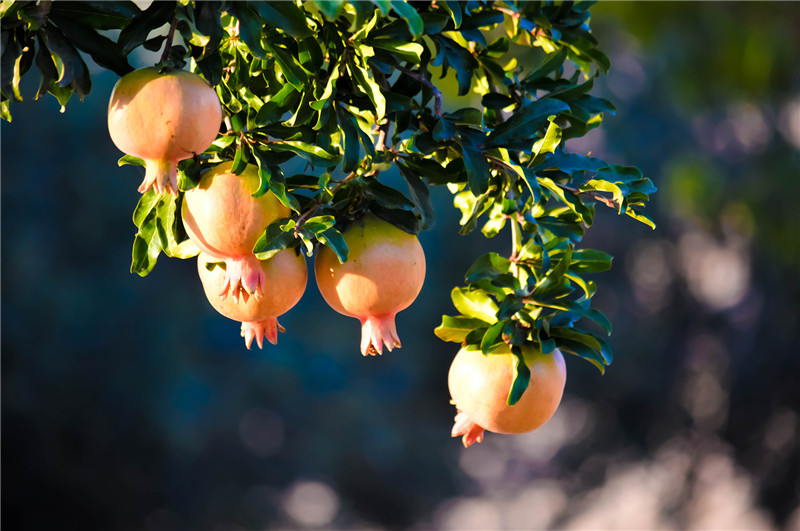
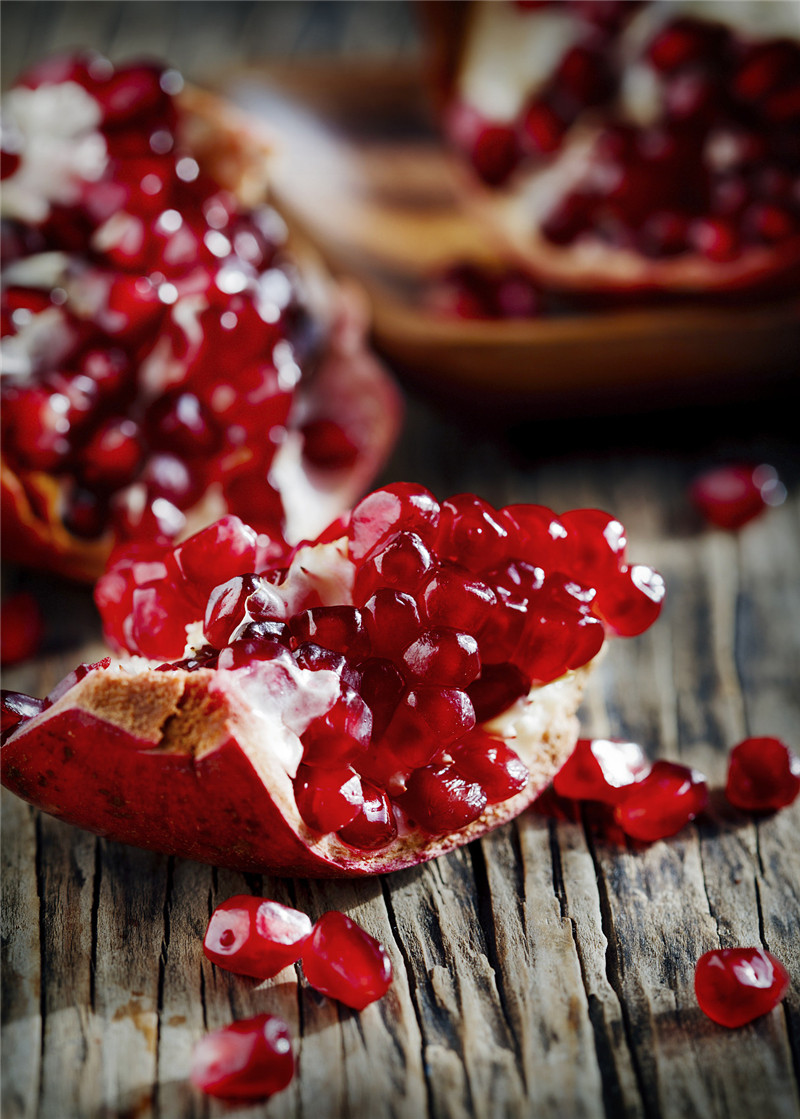
3.7.1. History, Usage, Claims
Pomegranate, Punica granatum, has potent antioxidant potential and has been used in multiple products as a topical antioxidant. Its high antioxidant content makes it an interesting potential ingredient in cosmetic formulations.
3.7.2. Composition and Mechanism of Action
The biologically active components of pomegranate are tannins, anthocyanins, ascorbic acid, niacin, potassium, and piperidine alkaloids. These biologically active components can be extracted from the juice, seeds, peel, bark, root, or stem of the pomegranate. Some of these components are thought to have antitumor, anti-inflammatory, anti-microbial, antioxidant, and photoprotective effects. Additionally, pomegranate is a potent source of polyphenols. Ellegic acid, a component of the pomegranate extract, may decrease skin pigmentation. Due to being a promising anti-aging ingredient, multiple studies have investigated methods to increase skin penetration of this compound for topical use.
3.7.3. Scientific Evidence
Pomegranate fruit extract protects human fibroblasts, in vitro, from UV-induced cell death; likely due to the decreased activation of NF-κB, downregulation of proapoptotic caspace-3, and increased DNA repair. It demonstrates anti-skin-tumor promoting effects in vitro and inhibits UVB-induced modulation of NF-κB and MAPK pathways. Topical application of pomegranate rind extract downregulates COX-2 in freshly extracted porcine skin, resulting in significant anti-inflammatory effects. Although ellegic acid is often thought to be the most active component of pomegranate extract, a murine model demonstrated higher anti-inflammatory activity with standardized pomegranate rind extract compared to ellegic acid alone. The topical application of a microemulsion of pomegranate extract using a polysorbate surfactant (Tween 80®) in a 12-week split-face comparison with 11 subjects, demonstrated decreased melanin (due to tyrosinase inhibition) and decreased erythema compared to the vehicle control.
3.8. Soy
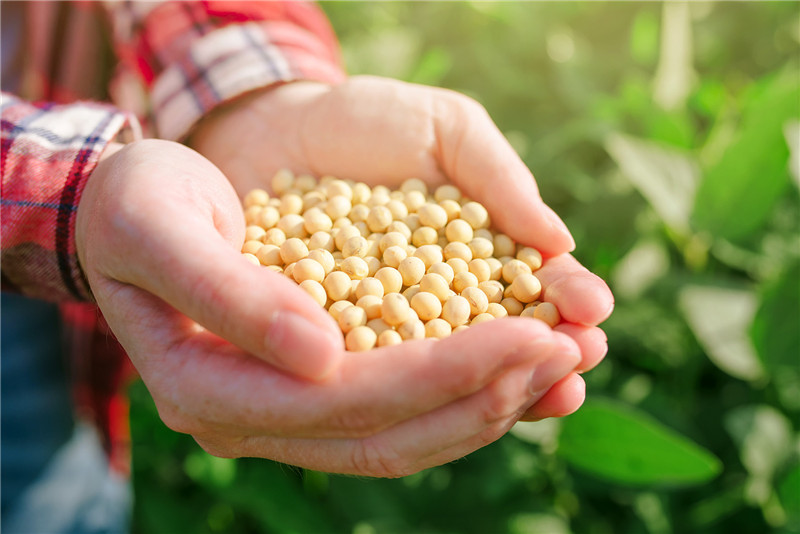
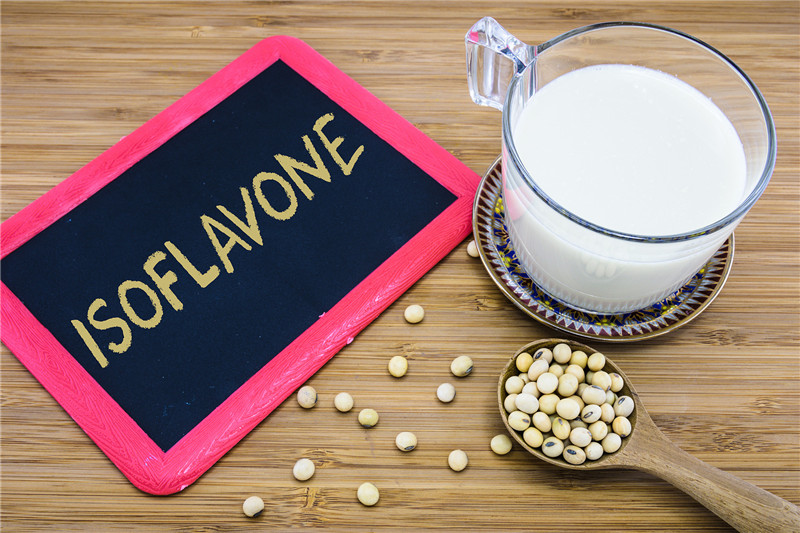
3.8.1. History, Usage, Claims
Soybeans are high-protein food with bioactive components that may have anti-aging effects. In particular, soybeans are high in isoflavones, which may have anticarcinogenic effects and estrogen-like effects due to the diphenolic structure. These estrogen-like effects could potentially combat some of the effects of menopause on skin aging.
3.8.2. Composition and Mechanism of Action
Soy, from Glycine maxi, is high in protein and contains isoflavones, including glycitein, equol, daidzein, and genistein. These isoflavones, also called phytoestrogens, may have estrogenic effects in humans.
3.8.3. Scientific Evidence
Soybeans contain multiple isoflavones with potential anti-aging benefits. Among other biologic effects, glycitein demonstrates antioxidant effects. Dermal fibroblasts treated with glycitein showed increased cell proliferation and migration, increased synthesis of collagen types I and III, and decreased MMP-1. In a separate study, soy extract was combined with haematococcus extract (freshwater algae also high in antioxidants), which downregulated MMP-1 mRNA and protein expression. Daidzein, a soy isoflavone, has demonstrated anti-wrinkle, skin-lightening, and skin-hydrating effects. Diadzein may function by activating the estrogen-receptor-β in the skin, resulting in an enhanced expression of endogenous antioxidants and decreased expression of the transcription factors that lead to keratinocyte proliferation and migration. The soy-derived isoflavonoid equol increased collagen and elastin and decreased MMPs in cell culture.
Additional in vivo murine studies demonstrate decreased UVB-induced cell death and a decreased epidermal thickness in cells after topical application of isoflavone extracts. In a pilot study of 30 postmenopausal women, oral administration of isoflavone extract for six months resulted in an increased epidermal thickness and increased dermal collagen as measured by skin biopsies in sun-protected areas. In a separate study, purified soy isoflavones inhibited UV-induced keratinocyte death and decreased TEWL, epidermal thickness, and erythema in UV-exposed mouse skin.
A prospective double-blind RCT of 30 women aged 45–55 compared the topical application of estrogen and genistein (soy isoflavone) to the skin for 24 weeks. Although the group applying estrogen to the skin had superior results, both groups demonstrated an increased type I and III facial collagen based on skin biopsies of preauricular skin. Soy oligopeptides can decrease the erythema index in UVB-exposed skin (forearm) and decrease sunburnt cells and cyclobutene pyrimidine dimers in UVB-irradiated foreskin cells ex vivo. A randomized double-blind vehicle-controlled 12-week clinical trial involving 65 female subjects with moderate facial photodamage demonstrated an improvement in mottled pigmentation, blotchiness, dullness, fine lines, skin texture, and skin tone when compared to the vehicle. Together, these factors could offer potential anti-aging effects, but more robust randomized clinical trials are needed to adequately demonstrate its benefit.
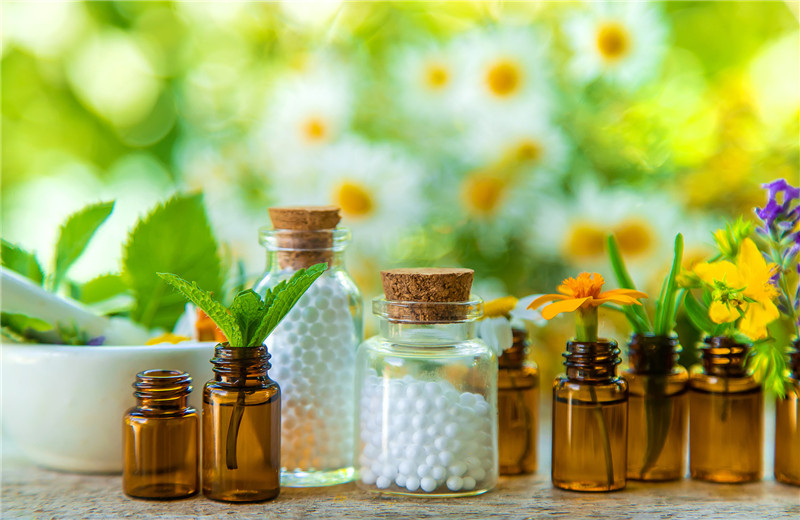
4. Discussion
Botanical products, including those discussed here, have potential anti-aging effects. Mechanisms of anti-aging botanicals include the free radical scavenging potential of topically applied antioxidants, increased sun protection, increased skin moisturization, and multiple effects leading to increased collagen formation or decreased collagen breakdown. Some of these effects are modest when compared to pharmaceuticals, but this does not discount their potential benefit when used in conjunction with other measures such as sun avoidance, the use of sunscreens, daily moisturization and appropriate medical professional treatment of existing skin conditions.
Additionally, botanicals offer alternative biologically active ingredients for patients who prefer to use only “natural” ingredients on their skin. Although these ingredients are found in nature, it is important to stress to patients that this does not mean that these ingredients have zero adverse effects, in fact, many botanical products are known to be a potential cause of allergic contact dermatitis.
As cosmetic products do not require the same level of evidence to prove efficacy, it is often difficult to determine whether claims of anti-aging effects are true. Several of the botanicals listed here, however, have potential anti-aging effects, but more robust clinical trials are needed. Although it is difficult to predict how these botanical agents will directly benefit patients and consumers in the future, it is very likely that for the majority of these botanicals, formulations that incorporate them as ingredients will continue to be introduced as skin care products and if they maintain a wide safety margin, high consumer acceptability, and optimal affordability, they will remain part of regular skin care routines, providing minimal benefits to skin health. For a limited number of these botanical agents, however, a greater impact to the general population may be obtained by strengthening the evidence of their biological action, through standard high throughput biomarker assays and thereafter subjecting the most promising targets to clinical trial testing.
Post time: May-11-2023





